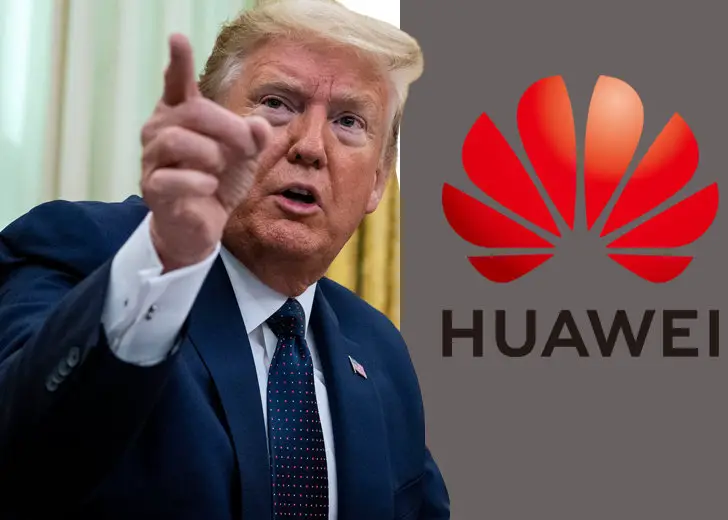Huawei Phones Future Remain Uncertain After US Trade Sanctions Affect Its SOC

The Chinese tech giant might face a huge obstacle because of the decision made by Trump administration to tighten the leash on the trade sanctions.
The latest update prevents Huawei from acquiring chips and software from not just the companies based in the US but also the abroad companies that are manufacturing using US technology.
Huawei, just recently dethroned Samsung as the largest global smartphone vendor in the second quarter of 2020.
Strict Trade Sanctions For Huawei
In May last year, the US government banned anyone in the “Entity List.” list to use commodities listed under "Commodity Control List." Huawei was also enlisted in the “Entity List.”
This move meant that the company needed to follow other restrictive guidelines, including applying and reapplying for licenses to engage in business with the US.
On May 15, 2020, Washington announced that a license would be required to supply any US patented technology to a Chinese vendor, even if the manufacturing process was taking place outside US soil.
This development came with a 120-day buffer that runs out next month.
Implications To Huawei
As Huawei has been already struggling to be relevant in the Western markets since it lost Google’s services, these strict restrictions from the US may also affect the tech firm’s hold on the Asian market.
Up until now, Huawei sourced its innovative Kirin chips from TSMC (Taiwan Semiconductor Manufacturing Company). But, it wouldn’t be able to do so after this month.
With Kirin out of the picture, Samsung and Qualcomm should have been the next go-to option, but the same restrictions apply to both these companies as well.
Huawei On The Market For A New Vendor
Huawei relied on the Taiwan based semiconductor foundry for most of its smartphones’ unique selling point—its great camera performance.
A huge chunk of Huawei’s camera performance can be credited to the image signaling processor baked into the SOC. The chipset system housed its cutting-edge BM3D noise-reduction algorithm and supported its unique RYYB sensor technology.
Not just that, Huawei also gained machine learning capabilities thanks to Kirin’s custom Da Vinci architecture.
The software capabilities of the chipset allowed Huawei phones to have super-resolution zoom imaging, low-power voice recognition, gesture controls, facial recognition security, and other important features.
In simpler terms, Kirin is a sophisticated chipset system that would be extremely hard to replace. If its capabilities are gone, Huawei phones will lose almost everything that made them what they were.
The list does not end there. This also affects the integration of the company’s proprietary 5G modems and other fine-tuned features in the silicon.
The Mediatek Rescue
But if there is anything to be derived from Huawei’s response to the previous trade restrictions, then it is the fact that Huawei will find a way to come back stronger.
In the current scenario, MediaTek seems like the only other manufacturer that the Shenzhen firm can turn to.
MediaTek is known to have powered a few of Huawei’s mid-range and budget offerings but is nowhere close to the micro-powerhouses that Kirin or Qualcomm pumped out.
Recently, MediaTek has come out with its own premium 5G SoCs—their first flagship chipset in roughly two years—but they are reasonably untested.
With no other way out of this tight spot, Huawei seems to be looking into MediaTek’s supply chain anyway. Global times recently reported that Huawei ordered more than 120 million chips from MediaTek amid the US chip ban.
Considering things really go down this route, MediaTek might just outsell Qualcomm. Experts are claiming that if the conditions are favorable, MediaTek might peak at two-thirds of the market share.
As one might expect, this decision will definitely change the industry dynamics because once MediaTek signs a major player such as Huawei, it is certain that it will rise.
That is exactly the reason why Qualcomm has begun lobbying the US government to let it sell chips to Huawei that would go into the Chinese brand’s 5G phones.
Qualcomm lobbying the US Government to stay in business
‘The Wall Street Journal’ reported Qualcomm official viewpoint:
If Qualcomm is subject to export licensing, but its foreign competitors are not, US government policy will cause a rapid shift in 5G chipset market share in China and beyond.
The San Diego company also presented the argument that the US-based manufacturers would lose eight billion dollars to foreign competitors every year if they can’t trade on equal terms.
Prior to the whole trade ban fiasco, Qualcomm and Huawei had a healthy relationship as Huawei used their silicone extensively in their pocket-friendly offerings.
If things go as per Qualcomm’s estimation, it would be the first time that the consumers will see a Huawei flagship with a Snapdragon chipset.
In the position that Huawei is right now, it won’t back down anytime soon. The company has even moved to change things at home.
Huawei Changing Things At Home
Amid the new trade restrictions, the telecommunication giant has been out headhunting for young geniuses. A source with the ‘Global Times’ reported that Huawei was offering up to 2.01 million Yuan ($287,949) a year as per the direction of its CEO Ren Zhengfei last year.
Ren also confirmed that they would not be getting Americans on their payroll as a matter of principle.
He reasoned that employees with a US citizenship, a green card, or permanent US residency would be somehow tied back to the US and be subjected to their “long-arm jurisdiction.” He further added,
The strength of the US as a nation is not land, it's the talent. What can we learn from the US? Attract talent. There will be a lot of talented people coming to Huawei in the future.
The start of this decade will surely mark the change in the dynamics of the smartphone industry, and Huawei might have just taken a hit in the first round. But the game has just begun, and it would be played extensively from all the stakeholders.